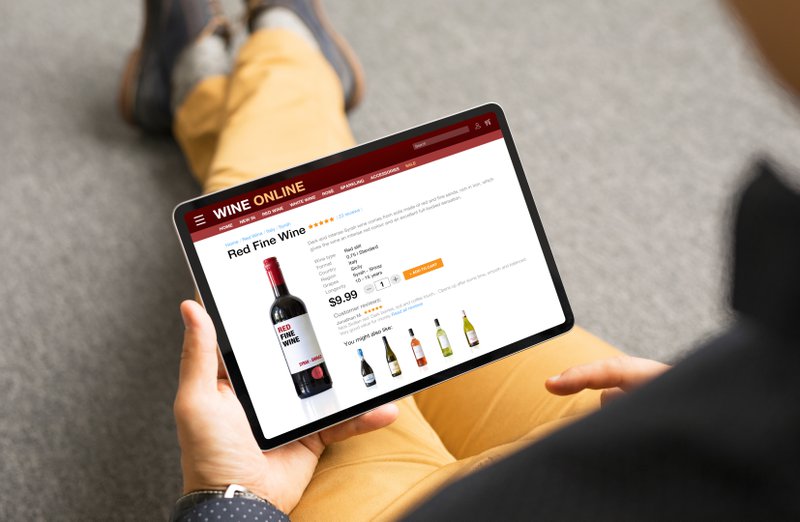When eCommerce first emerged in the mid-1990s, most sellers were just happy to have a working website—while buyers were just concerned about inputting their credit card information. Today, eCommerce involves a lot more channels aside from a seller’s website. This multichannel approach uses a headless application to ensure that a brand can reach the most customers.
Back then, monolithic systems were all that eCommerce merchants had. During the early days of eCommerce when only one channel was enough, the system performed admirably.
As time passed and technology improved, other sales channels began showing up. Unfortunately, monoliths lacked the speed and flexibility to adapt to these new channels. More often than not, changes to the front end also changed the back end.
With less room to operate and grow, many online stores had to make do with the current settings. While improvements are possible, developers don’t have the time and confidence to implement changes at the front end without risking everything else breaking down.

Modern Problems Require Modern Solutions
To address these modern problems, eCommerce had to turn to modern solutions. The most obvious strategy was to decouple the eCommerce front end from the back end. This way, developers can continue expanding services at the storefront (front end) without having to worry about the processes happening on the server side (back end).
Using technology known as headless application implementation, brands became better equipped to keep up with market changes.
As eCommerce has evolved from legacy systems to headless applications, so have online business goals. Companies used to depend entirely on simpler metrics to measure online success.
Now, sales teams also look at the effect that differentiators have in capturing the attention of more customers.
Generic eCommerce Application Objectives
The generic eCommerce application objectives listed below are common metrics that measure a company’s online success. Headless application implementation addressed many problems that prevented customers from scoring high on these metrics. Let’s look at how each metric improved with the application of headless commerce.

Increased Customer Lifetime Value (CLV)
Customer Lifetime Value (CLV) measures the dollar amount an individual customer will earn your brand throughout their lifetime. From the moment they checked out for the first time to their latest transaction, the CLV indicates the efficiency of a company’s acquisition and retention campaigns.
However, factors such as page loading speed and website responsiveness can dramatically reduce CLV numbers due to inefficiency. Fortunately, the application of headless architecture systems helped improve online store performance. They did so by allowing faster loading speeds even if stores carry extensive product catalogs.
Lowered Customer Acquisition Cost (CAC)
Another metric that measures online success is customer acquisition cost (CAC). This tracks how much a company spends to convert a customer. Brands often look at CAC numbers before deciding on whether to increase or limit their ad spending and other strategies.
Unfortunately, the success of marketing campaigns is often limited by the traffic their site can accommodate. Thankfully, a headless application can radically increase traffic capacity for online sites. This means that as your marketing campaigns improve, your CAC numbers can now accurately measure their success.

Increased Average Order Value (AOV)
Like CLV, average order value (AOV) measures how much a customer spends in an average transaction. However, the performance of an online store can greatly influence how much customers are willing to pay.
Slow, unresponsive sites that take forever to load can significantly diminish a buyer’s appetite to splurge money. This is why the application of headless architecture can greatly speed up a store’s loading times, which can then increase AOVs immensely. Customers receiving faster responses are likelier to keep scrolling and buy more items.
Lower Customer Churn Rate
Churn rate, or the rate at which customers abandon a brand, is a great way to measure the success of a brand’s retention programs. As we all know, keeping existing customers happy is far more efficient and profitable than continually acquiring new ones.
However, a high churn rate can mean that campaigns aren’t working. Or, it can mean that the current customer experience is not good enough to make buyers stay. For subscription-based brands that depend on continuous renewals, a badly-performing site can prove fatal altogether.
Implementing headless architecture can bring about many improvements in site performance. At the very least, customers won’t be leaving your brand due to negative experiences such as slow-loading pages or unresponsive commands. It also means that pressure to keep customers sticking to them now goes back to marketing.

Headless Implementation Differentiators
Implementing headless commerce architecture to replace unresponsive monolithic systems can definitely improve brand performance in almost every metric. In addition, a headless application gives developers and business users the means to continually improve the customer experience without worrying about its effects on the back end.
Better Customer Experience (CX)
Providing highly personalized and customized experiences gets much easier once you free up your front end. Customers will become much more responsive and engaged if they get all the information they need when they need it.
For example, customers on the fence about buying can decide faster if they have the information at their fingertips. Real-time price updates, live inventory reports, and flash promotion offers can all tip the scales toward a purchase.
Faster Page Speed
Once your online store’s load and response times improve, customers will be happier navigating through your entire catalog. Faster loads also make using the store more intuitive, which also engages customers long enough to buy and buy more. improved site performance is one of the primary effects of using headless architecture.
Agile and Efficient UX
Another great innovation spawned from headless architecture is the increased ability to adapt to market changes. Headless architecture means providing greater flexibility for systems to choose the components they need and not be saddled by those they don’t. This flexibility also means that any changes in the front end won’t affect operations at the back end. The end result is the creation and development of agile and efficient user experiences that reflect today’s market conditions.
Ease of Development from a Frontend Perspective
With the front end completely decoupled from the back end, developers are free to use the technologies and services that their customers need. Ultimately, a headless approach liberates eCommerce companies to adjust the front end without disrupting the back end and vice-versa.
Start Your Headless Application Commerce Implementation Today
Learn more about how Zobrist can improve your customer experience. We’ll happily develop a custom solution to alleviate your digital pain points and elevate your eCommerce customer experience. Sign up for a demo today.




